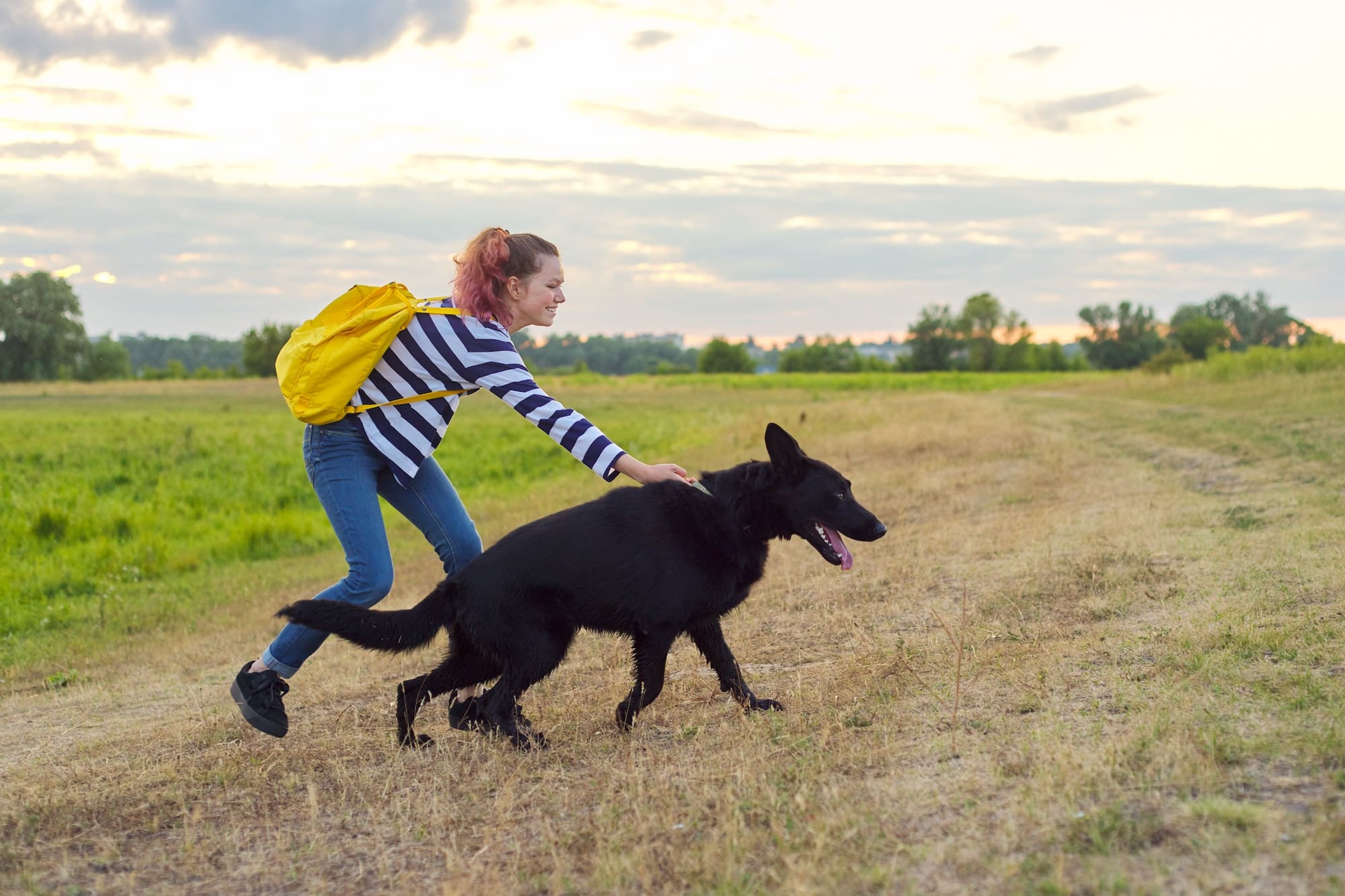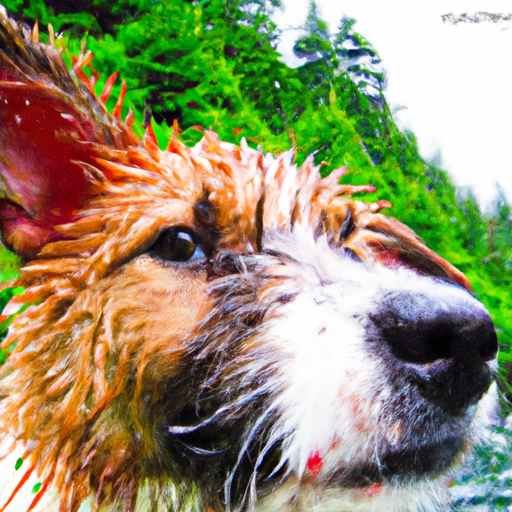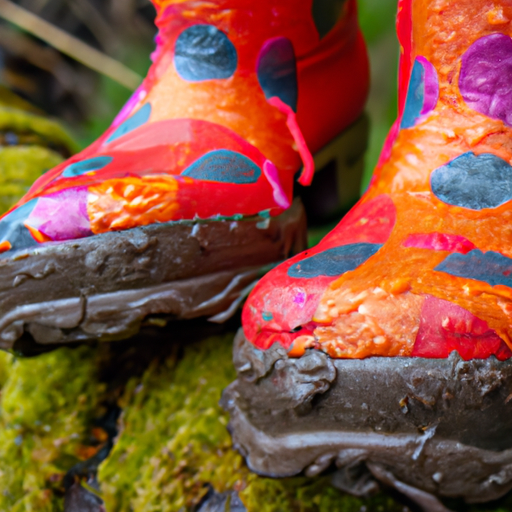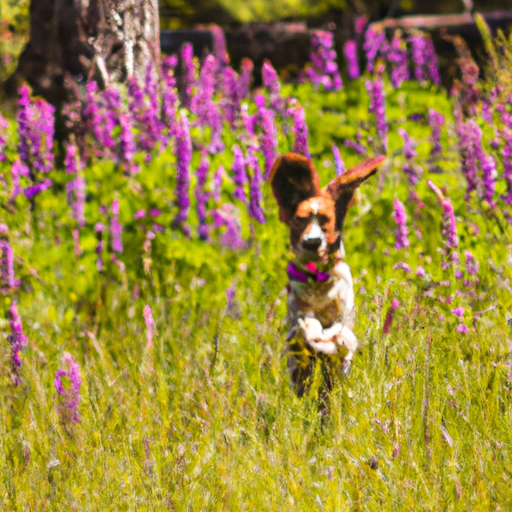As your furry companion grows older, it's essential to recognize and cater to their evolving playtime needs. Just like humans, dogs require physical and mental stimulation to lead a happy and healthy life. In adulthood, your dog may not have the same energy levels as they did in their puppy days, but that doesn't mean playtime should be neglected. By understanding your dog's playtime needs in adulthood, you can ensure they remain active, engaged, and maintain their bond with you. So, let's explore how to keep playtime exciting and tailored to your adult dog's preferences.
Importance of Playtime for Adult Dogs
Playtime is not just for puppies! It is equally important for adult dogs to engage in regular playtime activities. Playtime provides numerous physical, mental, and social benefits for adult dogs, ensuring their overall well-being.
Physical Exercise
Playtime is an excellent way to provide adult dogs with the physical exercise they need to stay healthy and fit. Regular exercise through play helps to maintain a healthy weight, improve cardiovascular health, and strengthen muscles. Activities such as Frisbee or fetch can provide a great aerobic workout, while games like tug of war help to build strength and endurance.
Mental Stimulation
In addition to physical exercise, playtime also provides mental stimulation for adult dogs. Engaging in interactive play helps to keep their minds sharp and prevents boredom. Brain teasers and puzzle games are excellent options to challenge their cognitive skills and provide mental enrichment. Mental stimulation through play can help prevent behavioral issues caused by boredom, such as destructive chewing or excessive barking.
Bonding and Socialization
Playtime is a wonderful opportunity for adult dogs to bond with their owners and other dogs. Engaging in play activities together strengthens the bond between you and your furry friend. Playing with other dogs also promotes socialization skills, allowing your dog to learn appropriate behaviors and interaction with fellow canines. This, in turn, helps prevent behavioral problems related to fear or aggression towards other dogs.
Behavioral Development
Playtime plays a crucial role in the behavioral development of adult dogs. It provides an outlet for their energy and helps prevent pent-up frustration or anxiety. Regular play helps dogs learn self-control, impulse control, and proper manners. Engaging in interactive play also provides an opportunity for training and teaching desired behaviors. Through play, dogs can learn commands such as “sit” or “leave it” in a fun and positive way.
Factors Affecting Playtime Needs
While playtime is important for all adult dogs, the amount and type of play can vary based on several factors.
Breed
Different breeds have different energy levels and play preferences. High-energy breeds such as Border Collies or Labradors may require more intense and frequent play sessions compared to lower-energy breeds like Bulldogs or Basset Hounds. Understanding your dog's breed characteristics can help you tailor their playtime needs accordingly.
Size
The size of your dog can also influence their playtime needs. Larger dogs generally have more energy and require more physical exercise. They often enjoy activities like running or playing fetch. On the other hand, smaller dogs may prefer activities that are more mentally stimulating, such as puzzle games or interactive toys.
Age
The age of your dog also affects their playtime requirements. Puppies have boundless energy and require frequent play sessions to burn off energy and stimulate their growing bodies and minds. Adult dogs may need less frequent but still regular playtime. Senior dogs may have lower energy levels and may prefer gentler play activities and shorter play sessions.
Health
The health of your dog should always be considered when determining their playtime needs. Dogs with certain health conditions or physical limitations may require modified play activities. Consult with your veterinarian to understand any restrictions or modifications necessary for your dog's playtime routine.
Personality and Temperament
Every dog has a unique personality and temperament, which can influence their playtime preferences. Some dogs may be more active and outgoing, preferring high-energy play activities. Others may be more laid-back and enjoy gentler play sessions. Understanding your dog's personality and tailoring play activities to their preferences will ensure a more enjoyable and fulfilling playtime experience.
Recognizing Signs of Playfulness
It's important to recognize the signs of playfulness in your dog to ensure that you are providing appropriate playtime opportunities.
Tail Wagging
A wagging tail is often a clear sign of a happy and playful dog. Look for a loose and wagging tail, which indicates excitement and enjoyment during playtime. Wagging tails can vary in speed and intensity and may be accompanied by a relaxed body posture.
Play Bows
Play bows are a classic sign of playfulness in dogs. This is when a dog lowers their front end while keeping their hind end in the air, often accompanied by a wagging tail. Play bows are an invitation to play and indicate that your dog is ready for some interactive fun.
Bouncing or Jumping
When a dog is excited and playful, they may engage in bouncing or jumping movements. This can be seen during play sessions, where they might jump up and down or bounce from side to side. This behavior is a clear indication that your dog is in a playful mood.
Barking or Vocalization
Some dogs express their playfulness through barking or vocalization. They may bark, growl, or make other playful sounds during play sessions. These vocalizations are often accompanied by wagging tails and a relaxed body posture.
Inviting Behavior
Dogs may exhibit inviting behavior during play, such as bringing toys to you or nudging you with their nose. This is their way of inviting you to participate in their playtime. Responding to their invitations and engaging with them will strengthen your bond and make playtime even more enjoyable.
Recommended Playtime Activities
Engaging in a variety of playtime activities ensures that your adult dog receives both physical and mental stimulation. Here are some recommended playtime activities:
Frisbee or Fetch
Playing Frisbee or fetch is a classic and effective way to provide your dog with physical exercise. Their natural instinct to chase and retrieve objects is fulfilled through these activities. Use a soft and safe Frisbee or a fetch toy designed specifically for dogs. Start with short throws and gradually increase the distance as your dog becomes more comfortable and proficient.
Tug of War
Tug of war is a fun and interactive play activity that helps build your dog's strength and endurance. Use a sturdy rope toy or a tug toy with handles for easy gripping. Remember to establish rules for the game, such as “drop it” or “take it,” to ensure safe and enjoyable play.
Hide and Seek
Hide and seek is not just for children! It can be an exciting and mentally stimulating game for adult dogs. Hide treats or favorite toys around the house or in the yard, and encourage your dog to find them using their sense of smell. This game provides mental stimulation and satisfies their natural scavenging instincts.
Interactive Toys
Interactive toys are a great way to keep your dog engaged and mentally stimulated during playtime. Toys that require problem-solving or provide a challenge, such as treat-dispensing toys or puzzle games, keep your dog entertained and prevent boredom. These toys also encourage independent play, which is beneficial when you are unable to interact directly with your dog.
Brain Teasers and Puzzle Games
Brain teasers and puzzle games are excellent for providing mental stimulation during playtime. There are various interactive toys and puzzles available that require your dog to solve a problem or figure out how to access a hidden treat. These activities engage your dog's cognitive abilities and keep them entertained for longer periods.
Creating a Play Schedule
Establishing a play schedule helps ensure that your adult dog receives regular playtime and maintains a balanced lifestyle. Here are some tips for creating a play schedule:
Setting Aside Regular Time
Allocate specific times each day for playtime with your dog. Consistency is key, as dogs thrive on routine. Determine a schedule that aligns with your daily activities and stick to it as much as possible. This regularity will help your dog anticipate and look forward to their play sessions.
Adjusting for Individual Needs
Consider your dog's individual needs when creating a play schedule. Some dogs may require shorter, more frequent play sessions, while others may benefit from longer, less frequent sessions. Observe your dog's energy levels and behavior to determine what works best for them.
Balancing Physical and Mental Engagement
A well-rounded play schedule should include a balance of physical exercise and mental stimulation. Alternate between activities that provide physical exertion and those that challenge your dog's mind. This balance ensures that your dog receives a comprehensive playtime experience.
Ensuring Safety During Play
Always prioritize safety during playtime. Remove any potential hazards or toxic objects from the play area. Supervise your dog during play to prevent accidents or injuries. If you notice any signs of fatigue or overheating, take a break and provide access to fresh water.
Outdoor vs Indoor Play
Both outdoor and indoor play have their own benefits and considerations. Understand the advantages of each to provide a suitable play environment for your dog.
Benefits of Outdoor Play
Outdoor play allows your dog to explore their natural instincts and provides a larger space to engage in high-energy activities. Running, fetching, and playing in an open area can provide ample exercise and mental stimulation. Fresh air and sunlight also contribute to the overall well-being of your dog.
Indoor Play Alternatives
Indoor play is a great option, especially during inclement weather or in homes without access to a yard. Indoor play can involve activities such as hide and seek, interactive toys, or puzzle games. Choose activities that require less space but still provide mental and physical engagement.
Considerations for Different Seasons
Consider the weather and seasonal changes when planning outdoor playtime. During hot summer months, play during cooler times of the day to prevent overheating. In colder seasons, be mindful of freezing temperatures or icy conditions that may pose risks to your dog's safety. Adapt the play schedule and activities accordingly.
Choosing Suitable Play Areas
When playing outdoors, choose safe and suitable areas. Fenced yards, dog parks, or designated play areas are ideal. Ensure that the space is free from potential hazards such as sharp objects or toxic plants. Indoors, designate a play area that is spacious enough for your dog to move around comfortably and safely.
Engaging with Your Dog During Playtime
Active participation and positive engagement during playtime are key to fostering a strong bond with your adult dog. Here are some tips for engaging effectively with your dog during play:
Active Participation
Actively participate in playtime with your dog. Join in on the play activity, whether it's tossing a toy, playing tug of war, or running alongside your dog. Your active involvement not only provides mental and physical stimulation for your dog but also strengthens the bond between you.
Positive Reinforcement
Use positive reinforcement techniques during playtime to encourage desired behavior. Praise your dog, offer treats, or use their favorite toys to reward them for engaging in appropriate play behaviors. Positive reinforcement helps your dog associate playtime with positive experiences, making it more enjoyable for both of you.
Teaching and Training Opportunities
Playtime offers valuable teaching and training opportunities. Incorporate basic obedience commands such as “sit,” “stay,” or “come” into play activities. This reinforces their training in a fun and engaging way. Use playtime as a chance to practice good behavior and reinforce the skills they have learned.
Communication and Body Language
Pay attention to your dog's body language during playtime. It is their way of communicating their comfort level and preferences. Observe their play signals and adjust your level of engagement accordingly. Watch for signs of fatigue, stress, or overarousal, and modify the play activity or take a break if needed.
Playtime for Special Dogs
Certain dogs may have unique needs or challenges that require special considerations during playtime.
Senior Dogs
Senior dogs may have reduced energy levels or physical limitations that require modified play activities. Opt for low-impact exercises such as gentle walks or swimming. Choose soft toys or puzzle games that are easier on their teeth and joints. Regular playtime for senior dogs helps maintain cognitive function and provides mental stimulation.
Disabled Dogs
Disabled dogs, whether due to mobility issues or sensory impairments, can still enjoy playtime with appropriate modifications. Adapt play activities to their abilities, providing interactive toys or games that accommodate their specific needs. Engage in activities that stimulate their remaining senses and enrich their lives.
Recovering/Injured Dogs
Dogs recovering from injuries or undergoing post-operative care require gentle play activities. Consult with your veterinarian to determine suitable exercises or games that won't strain their healing bodies. Low-impact exercises like controlled walks or gentle stretching can aid the recovery process.
Timid or Fearful Dogs
Timid or fearful dogs may require extra patience and sensitivity during playtime. Choose play activities that build their confidence, such as interactive toys or puzzle games that provide mental stimulation without overwhelming them. Allow them to approach play at their own pace and provide positive reinforcement for any engagement.
The Role of Toys in Playtime
Toys play a crucial role in enriching your dog's playtime experience. Here's how to maximize the benefits of toys during play sessions.
Choosing Appropriate Toys
Select toys that are safe, durable, and suitable for your dog's size and play style. Avoid toys with small parts or easily removable components that could be swallowed. Pay attention to any specific preferences your dog may have, such as squeaky toys or plush toys. Variety in texture, shape, and size will keep them engaged and prevent toy fatigue.
Rotating and Introducing Variety
Rotate your dog's toys regularly to keep playtime exciting and prevent boredom. Introducing new toys periodically adds novelty and stimulates their curiosity. Keep a collection of toys that can be alternated, so your dog doesn't lose interest in a particular toy.
Toy Safety and Durability
Always prioritize safety when it comes to toys. Ensure that toys are made from non-toxic materials and do not pose a choking hazard. Monitor the condition of toys regularly and discard any that are worn, damaged, or have loose parts to prevent accidental ingestion. Select toys designed for durability to withstand your dog's chewing and play habits.
Interactive and Treat-Dispensing Toys
Interactive and treat-dispensing toys provide mental stimulation and prolong playtime engagement. These toys require your dog to solve a puzzle or manipulate the toy to access treats or rewards. Not only does this provide mental stimulation, but it also satisfies their natural scavenging instincts.
When to Seek Professional Help
While playtime is generally a positive and enjoyable experience, there are certain situations in which professional help may be needed to address specific challenges or concerns.
Excessive Aggression or Rough Play
If your dog displays excessive aggression or engages in rough play to the point of endangering themselves or others, it is important to seek professional guidance. Aggression issues require the expertise of a qualified behaviorist or trainer to address underlying causes and provide appropriate behavior modification techniques.
Lack of Interest in Play
If your dog consistently shows a lack of interest or enthusiasm in playtime activities, it may indicate an underlying health issue or emotional distress. Consult with your veterinarian to rule out any medical conditions. If no health concerns are found, a professional trainer or behaviorist may be able to assess any behavioral issues contributing to the lack of interest in play.
Obsession with Toys
While enjoying toys is normal, an unhealthy obsession with toys can be a cause for concern. If your dog displays possessive or aggressive behavior towards toys, seeks excessive comfort from toys, or becomes overly fixated, consult a professional. They can evaluate the situation and provide guidance on how to address these compulsive behaviors.
Behavioral or Anxiety Issues
If your dog's playtime consistently results in unwanted behavior or increased anxiety, professional assistance may be necessary. A behaviorist or trainer can help identify the underlying causes of these issues and provide guidance on how to modify behavior or manage anxiety during playtime.
Understanding and meeting your adult dog's playtime needs is a vital aspect of responsible pet ownership. By providing regular playtime, you can ensure your dog's physical, mental, and social well-being, while also strengthening the bond between you and your furry companion. Tailor play activities to their individual needs, engage with them positively, and use toys effectively to create enriching play experiences. Remember, playtime should always be fun, safe, and enjoyable for both you and your dog!






